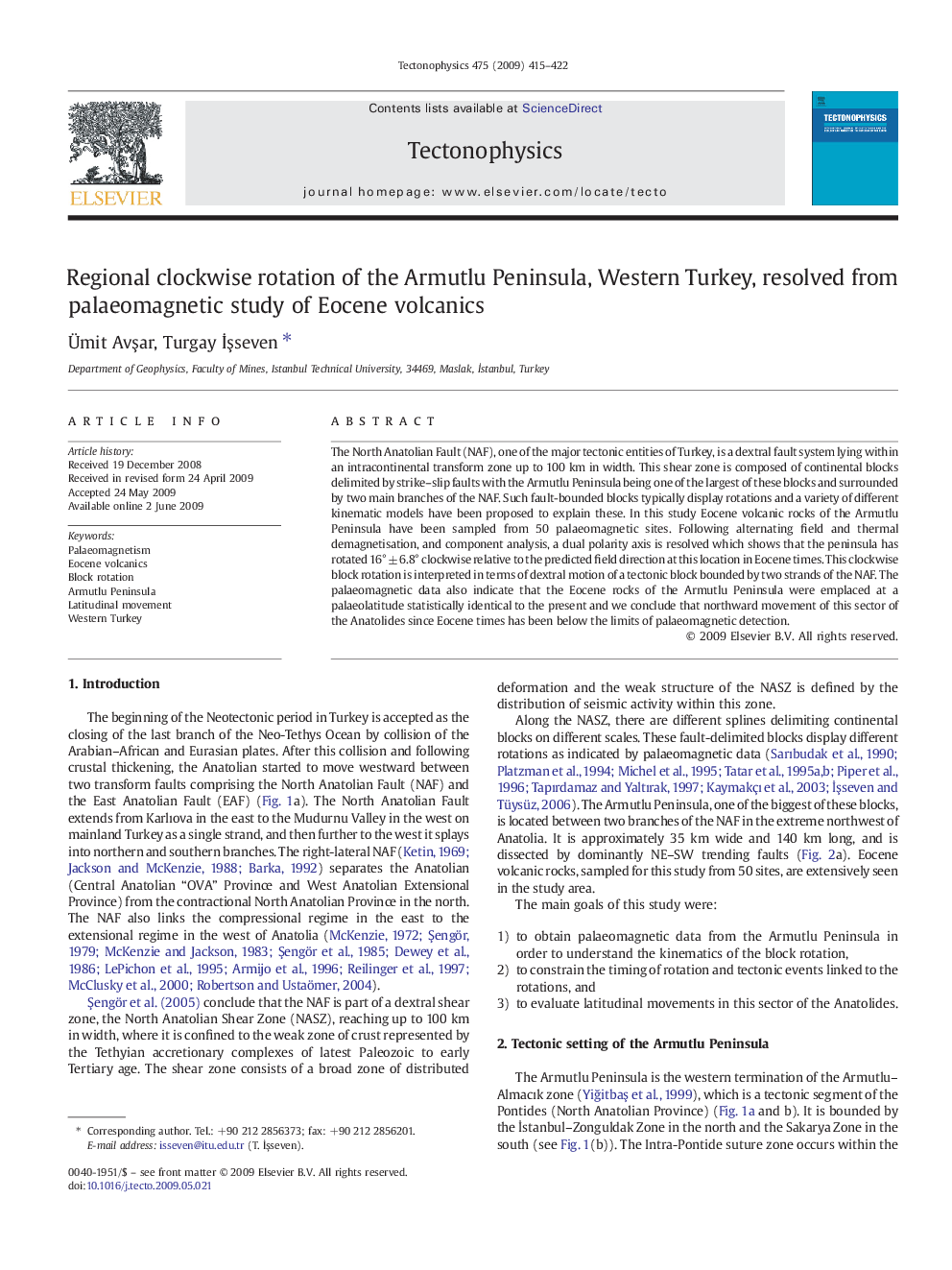| Article ID | Journal | Published Year | Pages | File Type |
|---|---|---|---|---|
| 4693764 | Tectonophysics | 2009 | 8 Pages |
The North Anatolian Fault (NAF), one of the major tectonic entities of Turkey, is a dextral fault system lying within an intracontinental transform zone up to 100 km in width. This shear zone is composed of continental blocks delimited by strike–slip faults with the Armutlu Peninsula being one of the largest of these blocks and surrounded by two main branches of the NAF. Such fault-bounded blocks typically display rotations and a variety of different kinematic models have been proposed to explain these. In this study Eocene volcanic rocks of the Armutlu Peninsula have been sampled from 50 palaeomagnetic sites. Following alternating field and thermal demagnetisation, and component analysis, a dual polarity axis is resolved which shows that the peninsula has rotated 16° ± 6.8° clockwise relative to the predicted field direction at this location in Eocene times. This clockwise block rotation is interpreted in terms of dextral motion of a tectonic block bounded by two strands of the NAF. The palaeomagnetic data also indicate that the Eocene rocks of the Armutlu Peninsula were emplaced at a palaeolatitude statistically identical to the present and we conclude that northward movement of this sector of the Anatolides since Eocene times has been below the limits of palaeomagnetic detection.
